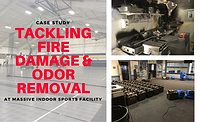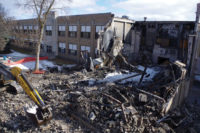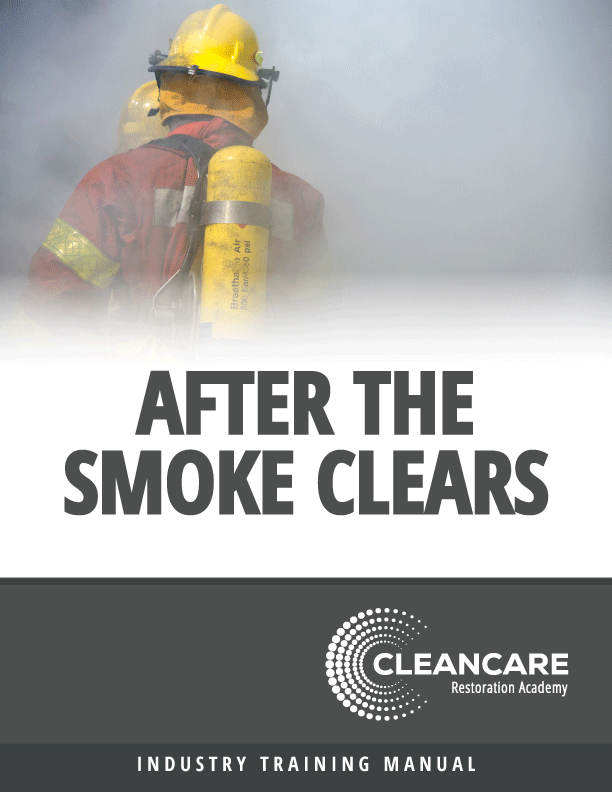Devastating Fire Leads to Massive Restoration Undertaking at 100,000 ft² Carpet Factory
A job that is at least 20 times larger than a large residential loss requires an exponentially larger amount of everything












Fire losses are some of the most time consuming, labor intensive and resource utilizing jobs that we run into in the restoration industry. They put nearly every aspect of our industry to work, simultaneously. We are often required to dry the structure, clean and pack contents, deodorize, mitigate smoke and soot, rebuild, paint, secure and protect the building. The list goes on. Needless to say, it requires a substantial amount of labor and resources to effectively restore any fire loss. The average residential loss typically runs anywhere from 1,000-10,000 square feet. Recall all that is required to process a job within that range. Now, imagine what it would take to do all of the above on a 100,000 square foot industrial facility. A job that is at least 20 times larger than a large residential loss requires an exponentially larger amount of everything. Here’s a look at the complexity of one such project.
On February 25, 2013, a fire erupted in a carpet factory in North Atlanta. The fire took almost all of the local fire department’s resources and nearly 24 hours to fully extinguish. It is estimated that 25% of the facility was damaged beyond repair and the remainder of the building sustained heavy smoke damage. In a typical fire, contents that must be protected, cleaned, tested and returned to pre-loss condition usually cost in the tens of thousands of dollars. A single machine in this facility had an estimated cost of more than $4 million to replace and can take up to two years to build. Factor in that there were other machines ranging in cost from the hundreds of thousands each, to $1 million-plus, and the scope of work continues its expansion. Needless to say, the highest level of detail is required on a project of this magnitude.
As with any loss, minimizing the damage takes priority to everything else. However, in a residential loss, any contents that cannot be cleaned are usually written off and replaced. What do you do when you have something that is so vital to production and takes two years to rebuild? You protect it, plain and simple! No stakeholder in the claim wants to see that type of loss on their report - the agent, carrier, adjuster and business owner(s) all would prefer to see it salvaged.
Large Loss Focus PointsThese are some standard things you should look at when taking on any large loss. Keep in mind that every project is different, but here are some focus points:
|
But where do you begin? A particular machine in this facility is such a highly intricate device that two years are required to assemble it. This is where your coordination skill comes into effect. Nivek knew the company that fabricates and maintains the machines should be contacted. So phone calls were made to Austria and Canada to have the respective maintenance crews come to the facility and help bring the machines up to specs. Nivek was tasked with coordinating crews from two different countries and a third-party engineering firm to clean the highly specialized machines. This was far from a simple task.
Until these crews could mobilize, a protective barrier was erected to seal off the room. Afterwards, every square inch of the machines was covered with a protective polymer barrier to minimize particle settling. Surface cleaning was conducted to reduce the potential for pocking (the process where chemicals in the soot cause pits or holes in metallic surfaces). Then, the internal workings of the machines were left for the highly specialized foreign crews.
Next was the arduous task of itemizing, packing, cleaning and storing the salvageable contents in the factory. When dealing with a 100,000 square foot facility, which holds a substantial amount of contents, meticulous planning is required. The office space had the typical array of desks, tables, chairs, electronics and multitudes of office supplies, which had to be immediately processed, thus allowing the business to coordinate the current orders. Chronicled documents had to be repacked in such a manner to provide for easy re-storage and efficient re-filing upon completion of the project. Multi-material storage racks required varying degrees of detail and multiple chemicals for the corresponding material to be cleaned. It was a tedious task that required nearly 50 dedicated technicians working non-stop throughout the project. After cleaning had occurred, every on-site structure was covered with plastic to ensure that the articles were protected.
A larger force was assembled for the seemingly daunting task of cleaning the structure. Keep in mind that 100,000 square feet does not adequately reflect the cubic footage of the building. The majority of the structure had walls that were at least 20 feet tall and had peaks at or above 30 feet. This accumulated to an enormous cubic footage, which required dozens of cleaning technicians to complete the initial clean-to-paint phase of the project.
Afterwards, commercial painting crews were called in to seal and paint the exposed surface areas of the structure. The areas were prioritized in a manner to sequentially bring the most vital phases of the plant online, therefore restoring operations and minimizing business interruption. The first phase of plant operations were brought on as early as one week into the project. Nivek maintained constant coordination with all personnel, project managers, contractors, adjusters, owners, managers and all other stakeholders in the process by having a centralized point of contact in their state-of-the-art, mobile command unit. Communication is among the most essential practices in any loss, particularly in a large industrial loss.
The drying phase was among the easiest, yet most time consuming, processes of the project. Four 7,500 CFM desiccants were online throughout the project to ensure proper drying and atmospheric control. The delicacy of the manufacturing equipment negated the potential use of supplemental air movement, as particle disruption could not be risked. Although the structure was mainly comprised of concrete substrate and metallic skeleton and shell, a substantial amount of water was introduced into the environment during the 24-hour extinguishing of the fire. The prevalence of the moisture could have caused substantive damage to the operating computers or the machinery themselves.
Any large loss tests even the most experienced of restoration experts. The obstacles, and the skill and precision required to overcome them, makes the routine losses pass with ease. When you challenge your personnel with some of the most difficult tasks with substantial scope and near impossible deadlines, seeing them excel in their duties renews the faith you will place in those who take care of your clients. We have processed a project that from the initial loss to the full operation of the salvageable areas took four weeks in total.
These losses are beneficial to the growth of not only the company, but to the base of knowledge of each and every employee that participates in the mitigation. Projects of this level require everyone to perform at the highest possible level and the retention of the experiences gained will expand the professionalism, customer service and overall performance of the entire claims process for any company.
Each project introduces new obstacles. Each project teaches you something. If you aren’t trying new things, you aren’t keeping up. No matter how long you have been in the industry, the ever changing dynamics offer some of the most rewarding learning experiences across all sectors. We must continue to learn in order to continue to grow. When you can streamline your process to exceed expectations for your largest clients, it makes the everyday routine that much more productive and gives you a sense of appreciation and achievement for all that you have and will accomplish.
The total project time lasted 26 days. Nivek took a phased approach in bringing the facility online. The offices were operational in a matter of days, while the production facilities were brought online in the order of their respective production process, to facilitate a steady flow in the mill’s operational processes. The end result was a fully operational carpet mill with no trace that a fire had occurred just a short three-and-a-half weeks prior.
To contact Nivek, visit the company online at www.nivek247.com or contact its industrial division at (866) 977-3791.
Looking for a reprint of this article?
From high-res PDFs to custom plaques, order your copy today!













